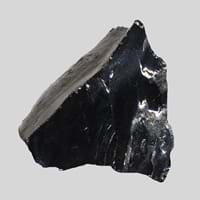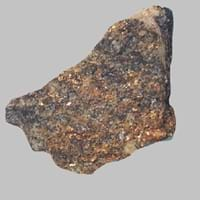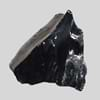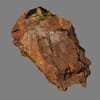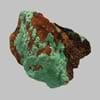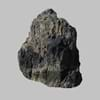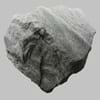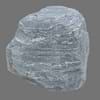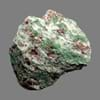Definition
Anthracite is a type of sedimentary rock which is hard and is variety of coal that has high luster
Adakite is an intermediate to felsic volcanic rock that has geochemical characteristics of magma which is said to be formed by partial melting of altered basalt that is subducted below volcanic arcs
Origin
Pennsylvania, U.S.
Adak, Aleutian Islands
Discoverer
Unknown
Defant and Drummond
Etymology
From Greek anthrakites, from anthrax, anthrak meaning coal
From Adak, Aleutian Islands
Class
Metamorphic Rocks
Igneous Rocks
Sub-Class
Durable Rock, Soft Rock
Durable Rock, Medium Hardness Rock
Group
Not Applicable
Volcanic
Other Categories
Coarse Grained Rock, Fine Grained Rock, Medium Grained Rock, Opaque Rock
Fine Grained Rock, Medium Grained Rock, Opaque Rock
Texture
Amorphous, Glassy
Porphyritic
Color
Black, Brown, Dark Brown, Grey, Light to Dark Grey
Black, Brown, Light to Dark Grey
Durability
Durable
Durable
Appearance
Veined or Pebbled
Dull and Soft
Interior Uses
Not Yet Used
Decorative Aggregates, Floor Tiles, Homes, Hotels, Kitchens
Exterior Uses
Not Yet Used
As Building Stone, As Facing Stone, Office Buildings
Other Architectural Uses
Not Yet Used
Whetstones
Construction Industry
Cement Manufacture, for Road Aggregate, Making natural cement, Steel Production
As Dimension Stone, Cobblestones, Rail Track Ballast, Roadstone
Medical Industry
In Chemical and Pharmaceutical Industry, Manufacture of Aspirins
Not Yet Used
Antiquity Uses
Not Yet Used
Monuments, Sculpture, Small Figurines
Commercial Uses
Alumina Refineries, Electricity Generation, Liquid Fuel, Manufacture of Soap, Solvents, Dyes, Plastics and Fibres, Paper Industry
Commemorative Tablets, Pottery, Used in aquariums
Types
Semi-anthracite and Meta-anthracite
Not Available
Features
Helps in production of Heat and Electricity, Used as fossil fuel
Has High structural resistance against erosion and climate, Host rock for Diamond, Very fine grained rock
Archaeological Significance
Monuments
Not Yet Used
Used
Famous Monuments
Not Applicable
Data Not Available
Sculpture
Not Yet Used
Used
Famous Sculptures
Not Applicable
Data Not Available
Figurines
Not Yet Used
Used
Formation
Anthracite forms from the accumulation of plant debris in a swamp environment. When plant debris dies and falls into the swamp, the standing water of the swamp protects it from decay.
Adakite rocks are formed when the hydrous fluids are released from minerals that break down in metamorphosed basalt, and rise into the mantle they initiate partial melting.
Mineral Content
Calcite, Clay, Clay Minerals
Olivine, Plagioclase, Pyroxene
Compound Content
Carbon, Hydrogen, Nitrogen, Oxygen, Sulphur
Aluminium Oxide, MgO, Silicon Dioxide
Types of Metamorphism
Burial Metamorphism, Contact Metamorphism, Regional Metamorphism
Cataclastic Metamorphism, Contact Metamorphism, Impact Metamorphism, Regional Metamorphism
Types of Weathering
Not Applicable
Chemical Weathering, Mechanical Weathering
Types of Erosion
Not Applicable
Coastal Erosion, Sea Erosion, Water Erosion
Grain Size
Medium to Fine Coarse Grained
Fine to Medium Grained
Fracture
Conchoidal
Conchoidal
Streak
Black
Bluish Black
Porosity
Less Porous
Less Porous
Luster
Shiny
Grainy, Pearly and Vitreous
Cleavage
Non-Existent
Not Available
Toughness
Not Available
Not Available
Specific Gravity
1.1-1.4
Not Available
Transparency
Opaque
Opaque
Density
1.25-2.5 g/cm3
Not Available
Specific Heat Capacity
Not Available
Resistance
Heat Resistant, Water Resistant
Heat Resistant, Pressure Resistant, Wear Resistant
Deposits in Eastern Continents
Asia
Bangladesh, Burma, Cambodia, China, India, Indonesia, Kazakhstan, Malaysia, Mongolia, Pakistan, Turkey, Vietnam
India, Russia
Africa
Botswana, Kenya, Morocco, Mozambique, South Africa, Tanzania
Ethiopia, Somalia, South Africa
Europe
Belgium, Bulgaria, England, France, Germany, Greece, Hungary, Kosovo, Netherlands, Norway, Poland, Romania, Serbia, Slovakia, Slovenia, The Czech Republic, Ukraine, United Kingdom
Iceland
Others
Not Yet Found
Not Yet Found
Deposits in Western Continents
North America
Canada, Mexico, USA
Canada, USA
South America
Brazil, Chile, Colombia, Venezuela
Brazil
Deposits in Oceania Continent
Australia
New South Wales, Queensland, Victoria
Not Yet Found
All about Anthracite and Adakite Properties
Know all about Anthracite and Adakite properties here. All properties of rocks are important as they define the type of rock and its application. Anthracite belongs to Metamorphic Rocks while Adakite belongs to Igneous Rocks.Texture of Anthracite is Amorphous, Glassy whereas that of Adakite is Porphyritic. Anthracite appears Veined or Pebbled and Adakite appears Dull and Soft. The luster of Anthracite is shiny while that of Adakite is grainy, pearly and vitreous. Anthracite and Adakite are available in black, brown, dark brown, grey, light to dark grey colors. The commercial uses of Anthracite are alumina refineries, electricity generation, liquid fuel, manufacture of soap, solvents, dyes, plastics and fibres, paper industry and that of Adakite are commemorative tablets, pottery, used in aquariums.
